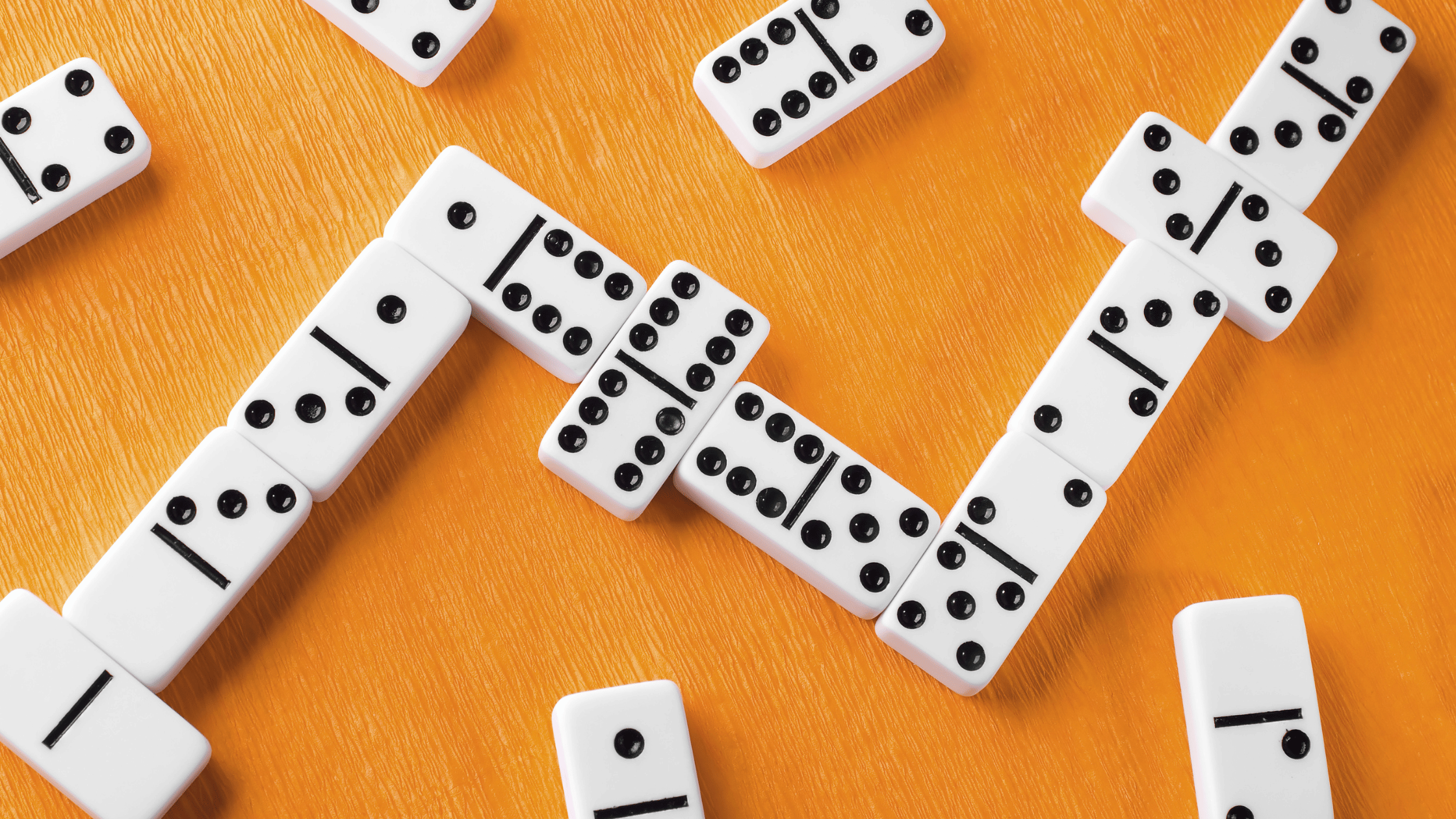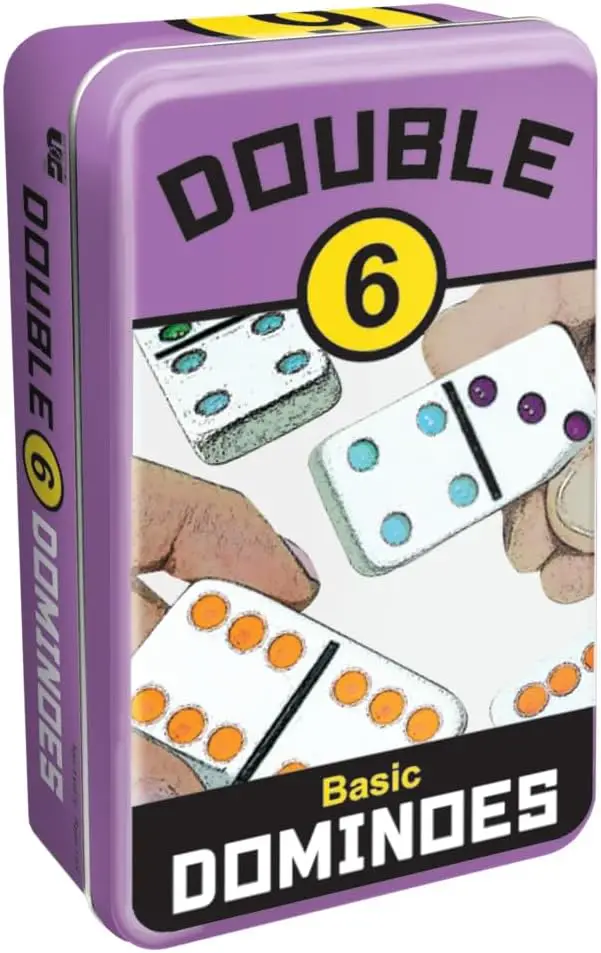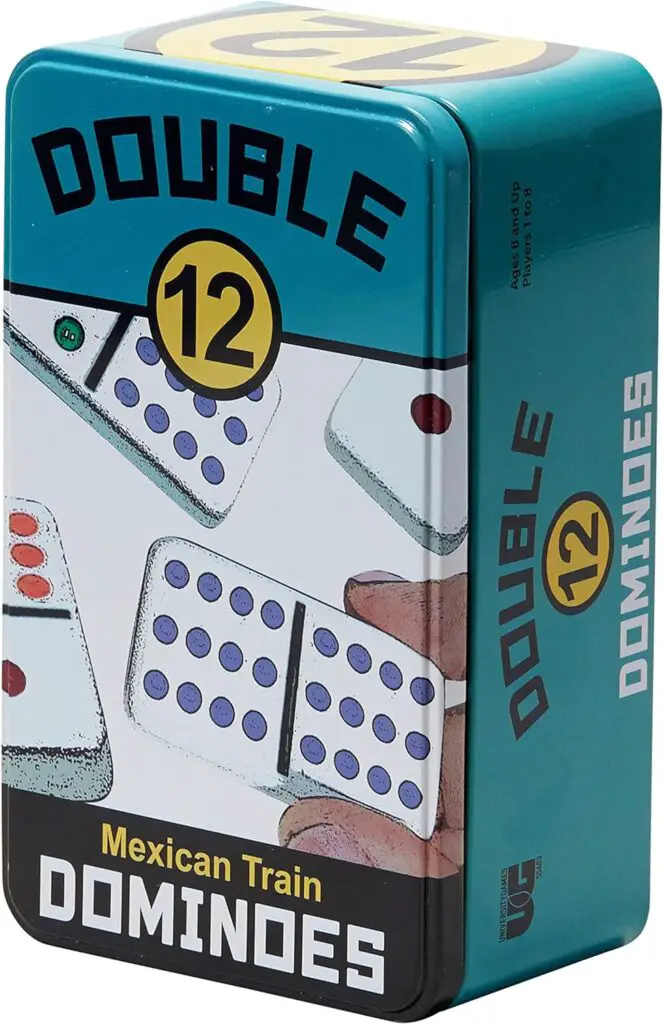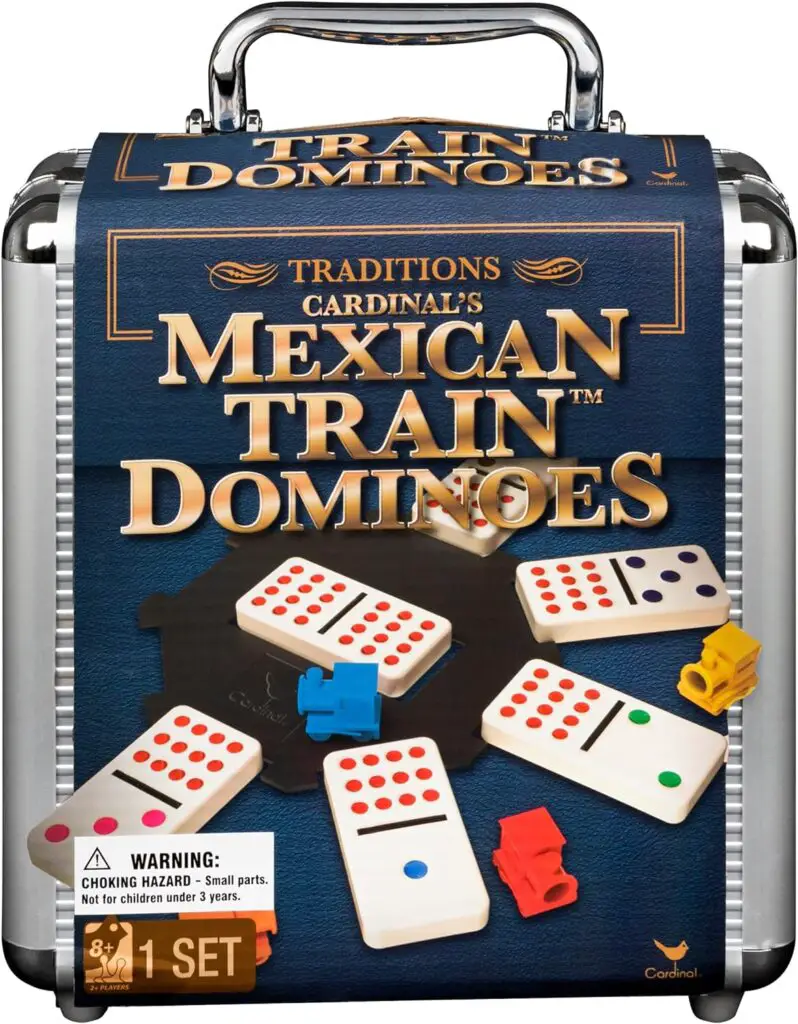Beginner’s Guide to Dominoes: Unveiling the Fun of Tile-Based Strategy
Dominoes is a game with a rich history and a simple, yet profound set of rules that allows for a variety of games and strategies.
Tapping into this classic pastime can be both engaging and relaxing, making it a perfect hobby if you’re looking for an activity that enhances cognitive skills and social interaction.
As a beginner, you may find the world of dominoes both intriguing and a bit overwhelming, given the numerous versions and play styles. Yet, starting with the basic versions of Block and Draw dominoes will provide you with a solid foundation.
From understanding how to set up the game and the mechanics of play, to advancing strategies that come with time and practice, you’ll gradually build your proficiency and enjoyment of the game.
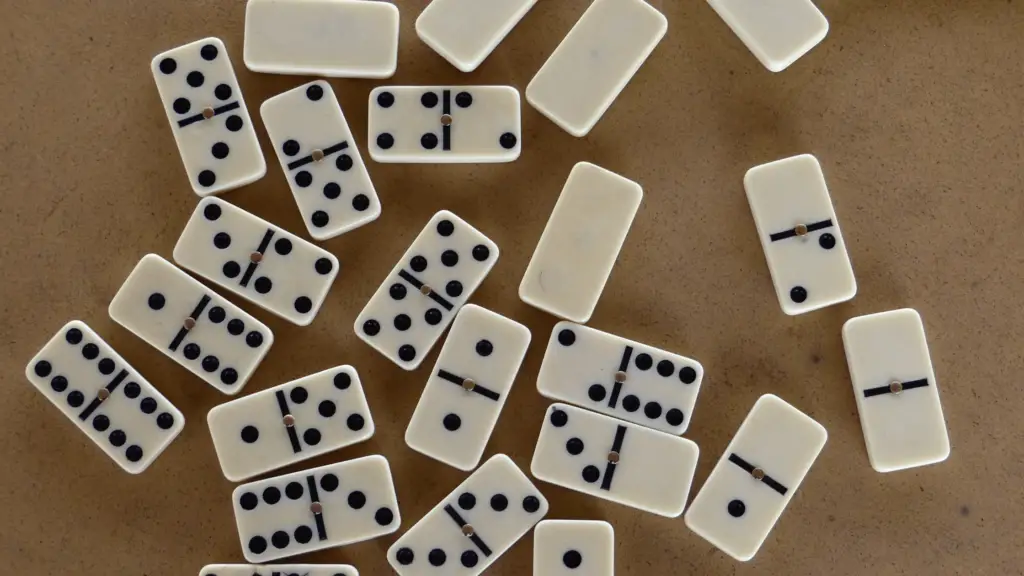
The fundamentals of dominoes involve recognizing the dominoes set, learning the primary rules of placement and scoring, and developing tactical play that improves with each round you play.
The game’s versatility and social nature contribute to its enduring popularity, making it a hobby you can enjoy for years to come. Whether you’re playing with friends and family or joining a community of domino enthusiasts, the world of dominoes welcomes players of all ages and skill levels.
Understanding the Basics of Dominoes

Dominating the dominoes game starts with a firm grasp of the essentials. Here, you’ll learn about the different tiles, how to set up the game, and the fundamental rules that govern gameplay.
Types of Domino Tiles
Each domino tile is a rectangle divided into two squares, with a number of dots—or pips—on each square ranging from zero to six.
The most common set, Double-6, includes 28 unique tiles, creating all possible pairs of numbers. For larger groups, sets like Double-9 and Double-12 expand the possibilities with 55 and 91 tiles, respectively.
Setting Up the Game
Before the game begins, shuffle the tiles face-down. Each player then draws a set number of tiles, keeping them hidden from opponents.
The number of tiles drawn depends on the number of players; for a Double-6 set, if there are 2-3 players, you each draw 7 tiles, and for 4 or more players, 5 tiles each is standard.
Basic Rules and Gameplay
The aim is to empty your hand while blocking your opponent’s moves. The game starts with the highest double or, if no doubles are drawn, the heaviest tile played.
Players then extend the line of play by matching one end of their dominoes to the same number of pips on the chain. If unable to play, you must draw from the boneyard or pass if it’s empty.
Remember, the strategic placement of tiles can affect your opponents’ options and the game’s outcome.
Popular Variants of Domino Games

Dominoes offer a range of games that vary in rules and styles, catering to different player preferences. Here’s a brief overview of some popular variants that you can enjoy.
Block Dominoes
In Block Dominoes, your goal is to be the first to play all your tiles. Ideal for 2-4 players, you start by shuffling the dominoes face down and each player draws a set number, usually 7 for 2 players and 5 for 3-4 players.
The first player places a tile, and then play proceeds clockwise with each player adding a matching tile to an open end. If you can’t play a tile, you pass your turn. The game ends when one player has played all their tiles or when the game is blocked because no player can make a move. The player with the lowest cumulative total of spots on their remaining tiles is the winner.
Draw Dominoes
Draw Dominoes is similar to Block but with a twist; if you can’t make a play, you must draw from the unused tiles. This variant begins as Block Dominoes does, but with a “boneyard” of leftover tiles available if you are unable to place a tile from your hand.
When the boneyard is empty, you would then pass if no playable tiles are in hand. The game ends when a player uses all their tiles or when no more moves are possible, with the winner being the one with the least number of pips on their remaining tiles.
Double-12 Dominoes
Double-12 Dominoes is a variation of the classic domino game, distinguished by its unique set of 91 domino tiles. Each tile in this set has a number ranging from 0 to 12, represented by dots on each half of the tile. The game typically starts with a double-twelve tile, and players take turns placing matching tiles from their hands to extend the line of play.
The layout can become quite expansive due to the large number of tiles and the broader range of numbers. The goal is to be the first to play all your tiles or to minimize the total number of pips left in your hand if no more moves are possible. Double-12 Dominoes offers a more complex and challenging experience compared to standard domino sets, making it popular for both casual and competitive play.
Mexican Train Dominoes
Mexican Train Dominoes is a game well-suited for larger groups, typically played with a double-12 or a double-9 set. In this variation, each player works to create their own line of dominoes, called a “train.” This game begins with a central hub from which players build their train.
If you’re unable to place a tile on your train, you must place a marker on your train indicating that it is open for others to play on. Play your tiles strategically as the game is won by the first person to play all of their dominoes, and points are scored based on the remaining tiles in the opponents’ hands.
By exploring these popular variants of domino games, you can easily find a style that suits your preferences, whether you’re looking for a straightforward, fast-paced, or more strategic domino experience.
Developing Strategies for Dominoes

Mastering dominoes involves understanding both the fundamental strategies and the more intricate tactics that can elevate your game. Let’s explore how you can enhance your approach to this classic game.
General Strategies
Observation: Pay close attention to the tiles played by your opponents. This will give you insights into the tiles they are holding, which can inform your strategy. If you notice certain numbers are played often, adjust your strategy to either block or score off those numbers.
Tile Management: Manage your hand effectively by playing the larger numbered tiles early in the game. By doing this, you minimize potential points your opponents can score if the game ends and tiles are left in your hand. Also, try to keep a balanced variety of numbers in your hand to avoid getting stuck with unplayable tiles.
Advanced Tactics
Scoring Opportunities: Analyze the board to maximize your scoring. This might involve setting up the board in a way that you can score in your subsequent turns. Identify patterns and opportunities to place your tiles for points, not just to rid of them.
Reading Hands: As you become more skilled, you’ll start to infer what’s in your opponents’ hands based on the tiles they play and their frequency. Use this knowledge to strategize your plays, block opponents, or force them to draw from the boneyard.
Remember to practice these dominoes variants to better understand different scoring systems and strategic nuances. Strategies evolve with each game variant, where the principles of good hand management and board analysis remain crucial. Learn the basics, then move on to advanced domino game strategy to refine your playstyle.
Playing Dominoes with Friends and Family

Dominoes is a classic game that offers hours of amusement when played with friends and family. Selecting a quality set and creating a welcoming play area are crucial steps for enjoyable gameplay.
Choosing the Right Set
When you’re looking for a domino set for family gatherings, consider the material of the tiles. Sets come in a variety of materials, including:
- Plastic: Durable and cost-effective.
- Wood: Offers a traditional feel with a heftier weight.
- Bone or Ivory: High-quality but more expensive and less commonly found.
Your choice should reflect not just your budget but also the set’s longevity and the tactile experience you wish to have. A standard domino set has 28 tiles, and it’s important to ensure that your set is complete.
Setting a Comfortable Environment
To maximize enjoyment, the surface you play on is just as meaningful as the set you choose. A good playing surface is:
- Flat: This ensures that tiles stand without wobbling.
- Smooth: Prevents tiles from snagging and eases shuffling.
- Spacious: You’ll want enough room for all the domino trails.
Gather around a large table and make sure everyone has ample space. Comfortable seating will keep friends and family engaged for hours. Keep snacks and drinks within reach but off the play surface to avoid spills. Good lighting and a quiet setting help maintain focus and make for a pleasurable game.
The Global Appeal of Dominoes

Dominoes, with its roots spreading across continents, resonates with a universal charm. Engaging and adaptable, this tile-based game has amassed varying play styles from every corner of the globe.
Dominoes Around the World
As you explore domino games, you’ll find a wealth of cultural heritage and diverse rules on a global scale. Popular domino games like Block, Draw, and Mexican Train have evolved through countries, intertwining with local customs.
Far-reaching in their appeal, the standard 28 tiles found in a set form the common language for enthusiasts worldwide. In many cultures, dominoes isn’t just a game—it’s a social catalyst, bringing together communities and generations.
In bustling Caribbean cafes, you might witness vigorous games of All Fives, where sounds of clacking tiles underscore lively discussions. Meanwhile, across European nations, games like Matador offer strategic variants that challenge the mind.
Online Dominoes Platforms
Shifting from physical tables to digital interfaces, online dominoes platforms now connect players across continents for a round-the-clock gaming experience. You have access to a plethora of apps and websites where you can indulge in a virtual game of dominoes, whether competitively or casually.
Online gaming has dramatically expanded the reach of dominoes, allowing you to play traditional versions or explore new variants with a few clicks. Internet play caters to all skill levels, thereby not only helping beginners to ease into the hobby but also enabling experts to test their mettle against global opponents. Whether you’re on a break or simply relaxing at home, an online match is never more than a screen away.
Check out OnlineDominoeGames.com for a few online variations of gameplay!
Benefits of Playing Dominoes
Playing dominoes offers several benefits, both recreational and educational:
- Cognitive Skills: Dominoes involve strategic planning, problem-solving, and critical thinking. Players often have to anticipate opponents’ moves and strategize accordingly.
- Math Skills: The game helps in enhancing basic arithmetic skills. Counting, adding, and matching numbers during play can be particularly beneficial for children learning math.
- Attention and Concentration: Dominoes require players to focus and pay attention to the game’s progress, which can improve concentration levels.
- Social Interaction: Playing dominoes is typically a social activity, encouraging interaction and communication among players. This can be beneficial for building social skills and maintaining healthy relationships.
- Fine Motor Skills: Setting up domino tiles and handling them during the game can help in developing fine motor skills, especially in younger players.
- Patience and Sportsmanship: Like many games, dominoes teach players to be patient and to exhibit good sportsmanship, whether they win or lose.
- Stress Relief: Engaging in a game of dominoes can be a relaxing and enjoyable way to unwind, which can help in reducing stress and anxiety.
- Memory Improvement: Remembering opponents’ moves and strategizing accordingly can enhance memory and recall abilities.
- Family Bonding: It’s a game that can be enjoyed by all ages, making it a good activity for family bonding.
- Cultural Appreciation: Dominoes have a rich history and are popular in many cultures, playing the game can also be a way to appreciate and learn about these cultures.
Overall, dominoes offer a unique combination of educational and social benefits, making it a valuable and enjoyable activity for people of all ages.
Frequently Asked Questions

In this section, you’ll find concise answers to common queries about starting with dominoes, including game variants, strategies, setup, solo play, and some historical context.
Can you describe a simple variant of dominoes suitable for beginners?
The Block Game is an ideal starting point for beginners. It’s a straightforward variant using a double-six set where 2 to 4 players aim to lay down all their tiles by matching the numbers on the connecting ends.
What strategies could increase my chances of winning at dominoes?
To enhance your winning potential, focus on controlling the board by keeping a variety of numbers in your hand and paying close attention to your opponents’ moves. For specific strategies, remember that the game’s nature can vary, so adapt your tactics whether you’re playing a blocking game or a scoring game.

How many pieces are used in a standard domino set, and how do you set up the game?
A standard domino set usually contains 28 pieces. Each player typically draws a certain number of tiles to form their hand, and the remaining pieces make up the boneyard or stock. The exact number drawn depends on the number of players. For a 2-player game, typically each player starts with 7 tiles.
Is there a way to play dominoes if you’re by yourself?
Solo domino games do exist, where the aim is to match tiles in a specific pattern or sequence to clear your hand or achieve a particular layout. It can serve as good practice to get familiar with the tiles and their numbers.
Could you provide a brief overview of the history of dominoes?
Dominoes is believed to have originated in China in the 12th century, and it spread to Europe in the 18th century, evolving into the game we know today with variations across cultures and countries. The game’s name, dominoes, comes from the pieces’ resemblance to Venetian carnival masks known as “domino” which were white with black spots.

